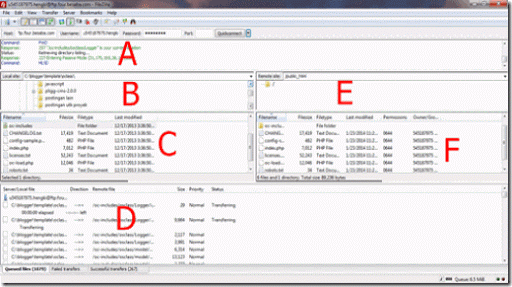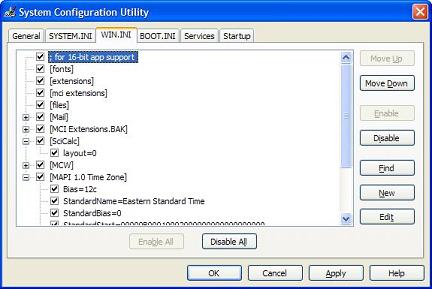

- #Filezilla log file how to
- #Filezilla log file update
- #Filezilla log file password
MSW: non-ASCII admin passwords can now be properly used. #Filezilla log file password
MSW: fixed various bug in the ExecDos plugin, that could cause the admin password not to be set properly. Admin UI: made default connection values correct, in case the settings file is missing. Admin UI: changed wording in the logging settings. Mac: fixed regression that made the installed service not startable. Debian: by default the service is now configured to exclude headers from log lines, since journald outputs its own headers already. MSW: Fixed an issue with the converter for configurations from FileZilla Server 0.9.x.  Admin UI: Improved workflow for changing user passwords. Admin UI: Fixed a crash on the listener page. Maximum number of log file rotations has been reduced to a more sensible amount and the rotation algorithm has been changed to be more efficient. *nix: Added a sktop file, so that the Admin UI can easily be opened by desktop environments. *nix: Logo icons are no longer embedded in the executables, they are instead installed to the proper system paths. When using the command line parameter -config-version-check ignore, the expected version is now written to the settings files if a mismatch is detected. FTP Server: The NLST command now reports paths compliant with RFC 1123. The number of possible worker threads has been reduced to a maximum of 256. Implemented a workaround, until it gets addressed by future MinGW toolchains MSW: Due to a toolchain issue, programs making use of thread-local variables would crash on exit. Fixed server crashes due to unexpected socket events in some corner cases. Sudden deaths of the impersonator process no longer cause unintended behavior.
Admin UI: Improved workflow for changing user passwords. Admin UI: Fixed a crash on the listener page. Maximum number of log file rotations has been reduced to a more sensible amount and the rotation algorithm has been changed to be more efficient. *nix: Added a sktop file, so that the Admin UI can easily be opened by desktop environments. *nix: Logo icons are no longer embedded in the executables, they are instead installed to the proper system paths. When using the command line parameter -config-version-check ignore, the expected version is now written to the settings files if a mismatch is detected. FTP Server: The NLST command now reports paths compliant with RFC 1123. The number of possible worker threads has been reduced to a maximum of 256. Implemented a workaround, until it gets addressed by future MinGW toolchains MSW: Due to a toolchain issue, programs making use of thread-local variables would crash on exit. Fixed server crashes due to unexpected socket events in some corner cases. Sudden deaths of the impersonator process no longer cause unintended behavior.  Configuration data that cannot be serialized now prevents an incomplete output file from being written to disk. Admin UI: The system_user's name cannot be edited anymore (rightly so). Admin UI (macOS): Implemented workarounds for some wxWidgets glitches and malfunctions. Admin UI: Fixed a crash in listener editor.
Configuration data that cannot be serialized now prevents an incomplete output file from being written to disk. Admin UI: The system_user's name cannot be edited anymore (rightly so). Admin UI (macOS): Implemented workarounds for some wxWidgets glitches and malfunctions. Admin UI: Fixed a crash in listener editor. #Filezilla log file how to
Admin UI: The password fields in the configuration dialog now how show a hint to inform the user about how to keep the existing password.Communication with the impersonator child process is now asynchronous.Settings still residing under %LOCALAPPDATA%\filezilla-server are automatically migrated.
#Filezilla log file update
This is to workaround the issue that when doing a Windows Update the settings could be wiped out.
MSW: If the service is running under the SYSTEM account, configuration files are now placed under %PROGRAMDATA%\filezilla-server. Server: The version number in the welcome messsage can now be manually suppressed by setting the "has_version" attribute of the message field in the configuration file to "false". Server: Implemented throttling of login attempts in case of too many failed attempts. Admin UI: Connection dialog did not remember the last used port if there are multiple saved entries for the same hostname with different ports. Admin UI: Fixed switching from "Use system credentials to log in" to "Require a password to log in" not applying. MSW: The notification area icon now displays again in all display scale factors. Fixed a crash if a session is closed and the data connection receives a connection error at the same time. If the connection couldn’t be established, you can get more information from the status list just under the top bar where you entered the login details.FileZilla Server 1.5.1 () Bugfixes and minor changes: If you’ve successfully connected, you should be able to see your files and folders on the right side of the screen. Note: Click OK if you get a warning about an unknown host key. Click on Quickconnect or press Enter to connect to the server. This should be the one you choose for SFTP/SSH when activating access in the control panel. Enter your Username, which is simply your domain name (), also without “www”. Write in lowercase only, and do not use “www” in front of the domain name. In the field Host, enter, substituting “” with your own domain name. If you’re unsure of how to do this, you can find help in this guide. Before you can login with SFTP, you also need to activate SFTP or SSH access in your one.com control panel. Before following the steps below, make sure you have downloaded FileZilla and have the program open in front of you. 
In this article, we’ll show you how to connect to an SFTP server via FileZilla.








 0 kommentar(er)
0 kommentar(er)
